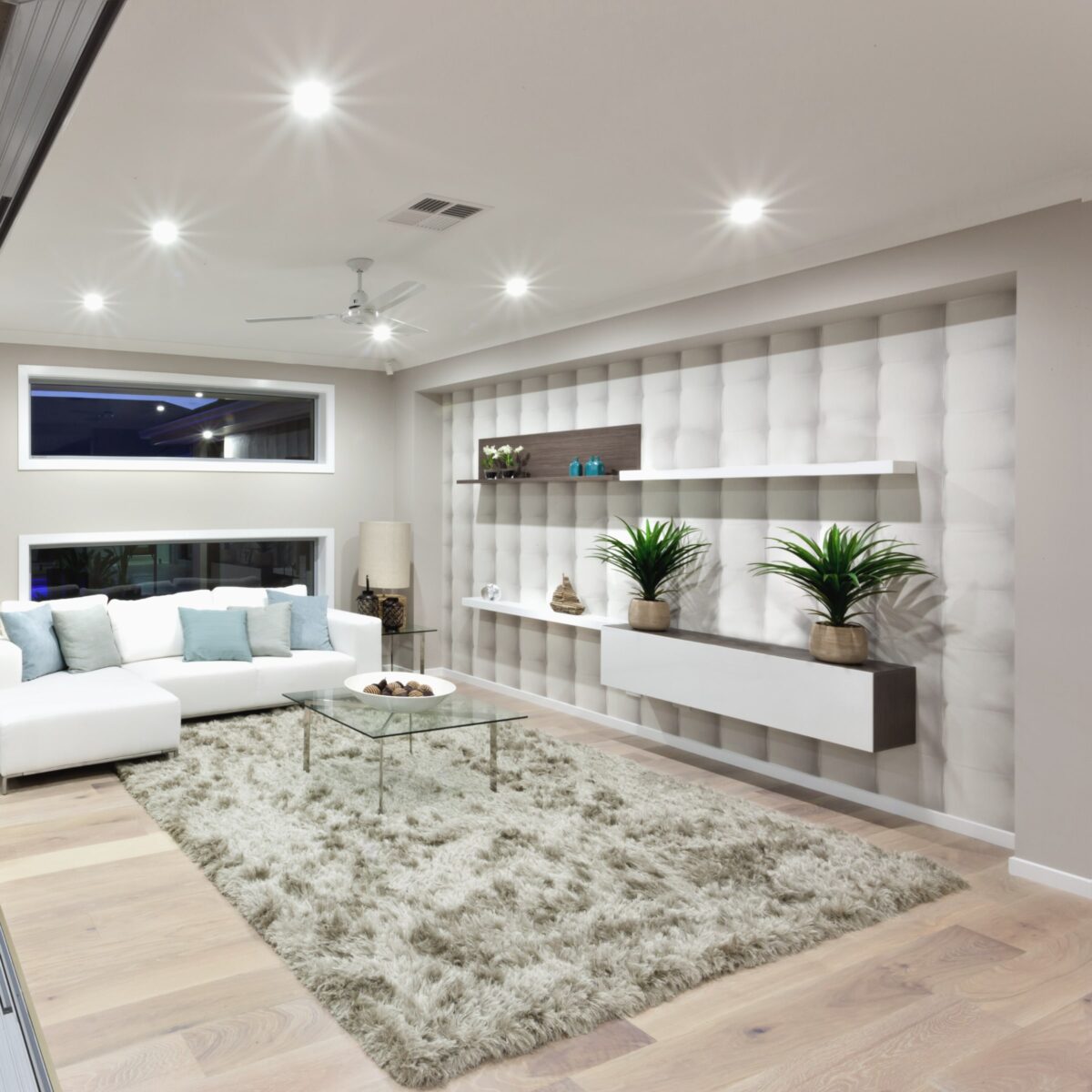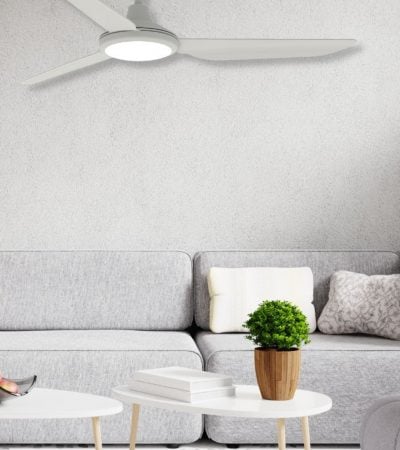
Shop the best price on ceiling fans with our lowest fan price guarantee!
Shop the best price on ceiling fans with our lowest fan price guarantee!
To NSW, ACT & VIC, and metro QLD & SA*
If you find a lower price, we’ll match it!
Sign up for exclusive VIP discounts all year round!
LED downlights use a different technology than the standard bulb, so we have put together a quick guide of the key points that make up LED technology to help you choose the right LED for your home.
Lighting is a great for setting the mood, but you need to make sure you are choosing the right colour for the spaces they are intended for. And, by this, we don’t mean do you choose red or blue, we are referring to colour temperature.
Light colour temperature refers to the “colour” tint of the white light emitted from your downlight. This colour is measured in kelvins (k) which most commonly range from 1500k up to 6500k. This measure of colour temperature is not to be confused with the brightness (measured in lumens) or power consumption (measured in watts) of the light.
Warm white is a comfortable light colour which is ideal for all areas of the house, in particular living areas and bedrooms. It generally falls on the lower end of the kelvin scale, between 2700-3300k.
Cool White is a lot brighter and is generally used in laundries, garages and, often, kitchens. Cool white generally falls between 3300-5300k.
Natural White, or daylight, sits between 5300-6000k on the kelvin scale, and is thought, as it’s name suggests, to most closely resemble natural light. It tends to be used more in retail and commercial spaces.

To understand the “brightness” an LED downlight will provide, we need to look at the luminous flux, which is measured in lumens. The lumen output is the measure of visible light emitted from a light source. The higher the lumens, the brighter the light. This differs to traditional forms of lighting, where wattage was generally a good measure of brightness.
Another important term you may come across in your downlight journey is “lux”. Lux is simply a measure of illuminance, or the level of light intensity. This measure is used in combination with lumens to describe the illumination of a one metre square surface that is one metre away from the light source. In simple terms, lux is the term used to describe lumens per square metre.
The beam angle is the amount of light that spreads from the downlight, and is measured in degrees. We talk about beam angle with downlights because they are a recessed fitting. A regular light globe for instance, being exposed, would have a beam angle of 360°. The beam angle of downlights varies anywhere from a narrow beam of 15°, creating a very concentrated light, to a wide beam angle of 120°.
Selecting the most appropriate beam angle for your downlights, it is important to consider the space they are being installed.Remember, bigger is not always better.Too wide a beam angle, and you can create “hot spots” of overlapping light. Too narrow an angle, and you may be left with dark patches in your space.
For general lighting from downlights, the Lighting Council Australia recommends a beam angle of
60°.

IC stands for Insulation Contact, and this a rating created to determine if a recessed downlight is suitable to come into contact with the building insulation or not. Most Australian homes are protected with insulation in the walls and ceilings, which acts as a barrier and is crucial for keeping the home cool in summer and warm in winter. When an LED downlight is given an IC rating, it means that it is suitable to come into contact with insulation without becoming a fire hazard.
If this is your first-time installing downlights one of the common questions asked is how far apart downlights should be, and how many in a room is too many.
To accurately calculate how many downlights your space will need, it is important to consider the colour temperature, lumens, and beam angle that will be appropriate to where they are being installed. To read more about this, as well as look at a real life example, you can download our eGuide, Your Ultimate LED Downlight Buying Guide.
Your electrician will also be able to guide you in the installation process, but as a quick guide there are a few things you can consider as a starting point at home.

We recommend choosing a quality brand product with the longest warranty. This could potentially save you hundreds of dollars in the future if the light was ever to fail. Many of our products offer a 3 year in home warranty as standard, giving you peace of mind.
If you would like more information about installing LED Downlights, contact one of the lighting experts at Rovert Lighting & Electrical. We can help you sort through the LED downlight jargon to find the ideal downlights for your home.
Become a Rovert VIP to unlock exclusive savings & offers!
Shop VIP prices
PLUS save $10 on your first
online order over $100!
